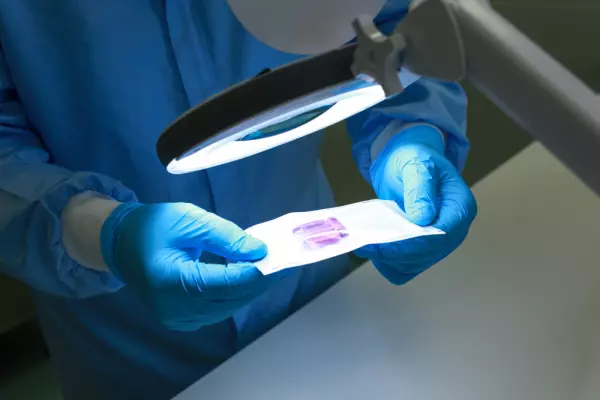
ETO, radiation sterilization of medical products...
sterilization ETO, radiation sterilization (gamma, e-beam) by external partners
Portal and digital medical technology fair of the largest MedTech cluster in Germany

ETO, radiation sterilization of medical products...
sterilization ETO, radiation sterilization (gamma, e-beam) by external partners

Gamma Sterilization for Disposable Medical Devices, Gamma Sterilization for Medical Devices, Gamma Sterilization for Pharmaceutical Devices, Gamma Sterilization Process for Disposable Medical Devices, Gamma Sterilization Process for Medical Devices, Gamma Sterilization Process for Pharmaceutical Devices, Irradiation Service for Disposable Medical Devices, Radiation Service for Medical Devices, Irradiation Service for pharmaceutical products
Gamma sterilization is the process of destroying bacteria with the help of a gamma ray. The radiation, also known as a gamma ray, is a penetrating form of electromagnetic radiation that originates from the decay of atomic nuclei. It is also one of the strongest forms of radiation, with wavelengths typically shorter than those of X-rays.
The radiation can be measured using dosimeters, which allows parametric release of the gamma beam. Because the process does not use lotsample sterility testing, it is a cost-effective option. It is also based on well-established validation procedures. These validated procedures are based on internationally recognized industry standards. The three official standards bodies ANSI/AAMI/ISO 11137 are the most widely accepted.
The radiation is then delivered through the gamma source to the final shipping packages. In the process, the final packaging is loaded into carriers or totes. The carriers are then moved around the gamma source to expose both sides of the package to the radiation. The gamma source is used to validate the maximum allowed dose, as well as the minimum sterilization dose. The dwell timer is adjusted accordingly, so as to achieve the validated process parameters.
Although gamma sterilization has its benefits, there are some disadvantages. The radiation can penetrate sealed products and alter their physical characteristics. Consequently, a product that is not sealed or protected during gamma sterilization may become damaged or useless. It can cause loss of product and affect the sterility of the product. This can lead to a number of complications, such as implant failure. Therefore, sterilization should be done according to the standard to ensure the safety of the product.
In smaller batches, a VDmax method is used. This method is ideal for sterilizing products that cannot withstand high gamma ray exposure. It is most commonly used in hospitals and medical laboratories for connective tissue allografts, such as skin tissues, bone marrow, and kidneys. Other applications of gamma sterilization include the production of pharmaceuticals and food packaging. The equipment used in this process can be leased.
Aside from being a reliable sterilization method, gamma rays can change the physico-chemical properties of polyurethane. This means that gamma rays should not be used to sterilize PU-containing medical devices. The FDA has outlined the safety issues associated with gamma ray sterilization. You should always consult a professional before using gamma rays on your products.
The effectiveness of gamma sterilization is highly dependent on the dose of gamma rays used. The gamma rays are measured in kilo-Gray (kGy), and the maximum irradiation dose may range between 35 and 45 kGy. Depending on the density of the product, the gamma radiation can reach as little as 1% of its total mass.
Become a digital exhibitor yourself in the online portal of the largest and best-known MedTech cluster region in Germany and inform the world of medical technology about your products and services as well as about news, events and career opportunities.
With an attractive online profile, we will help you to present yourself professionally on our portal as well as on Google and on social media.